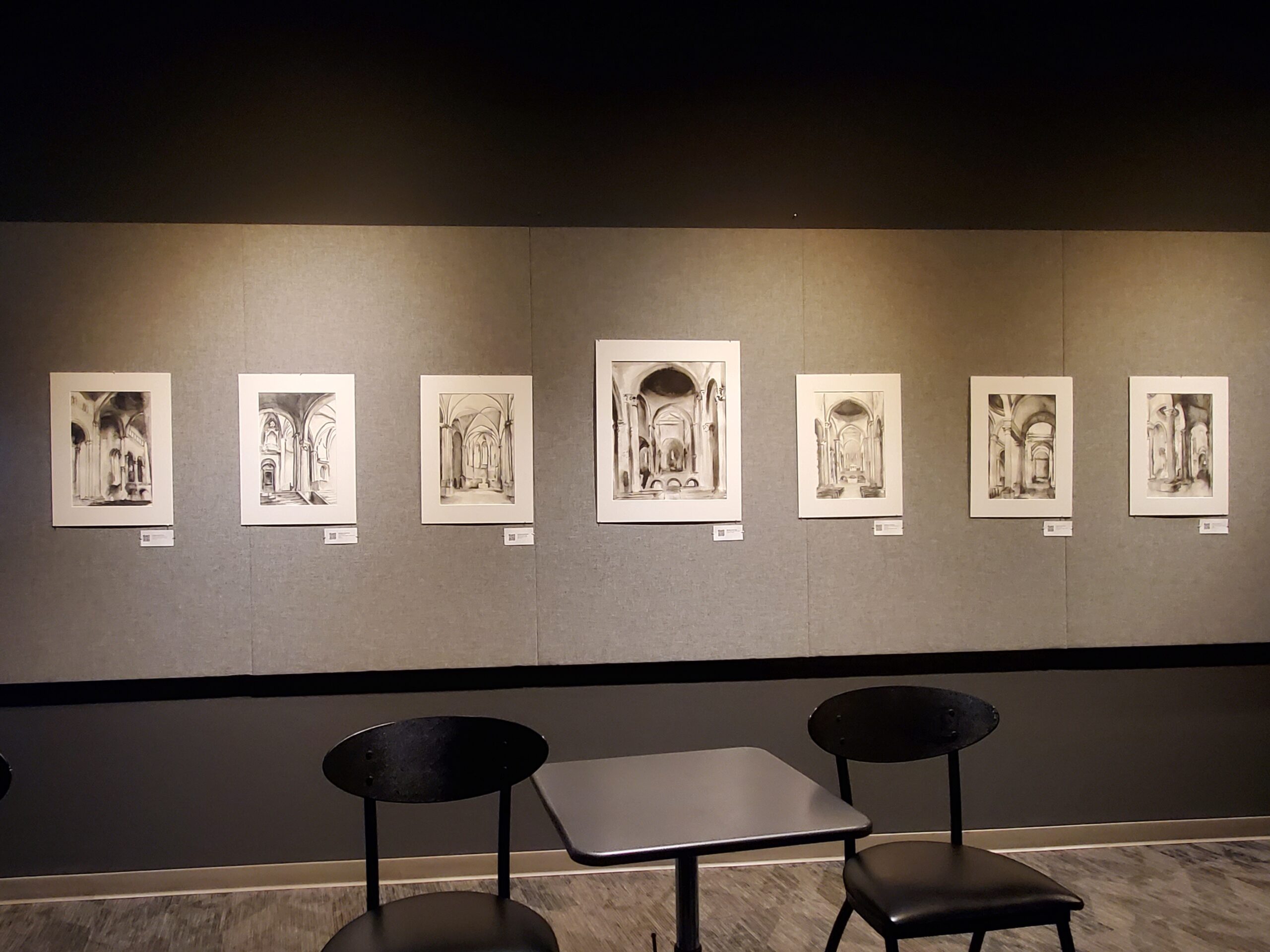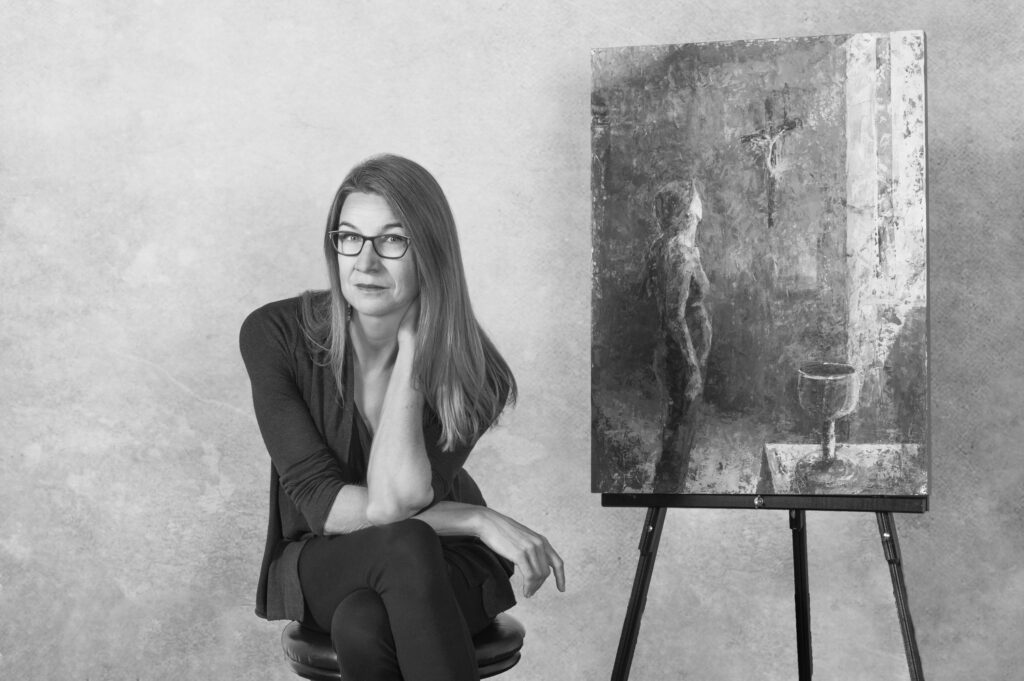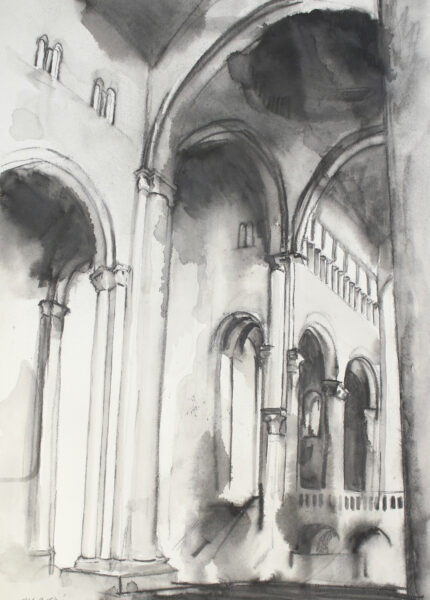
Santa Maria della Pieve Crossing, Water Soluble Graphite on Paper, 20″ x 14″ ©Michelle Arnold Paine 2024 Click to Purchase
Romanesque Architecture
In my fall 2023 trip to Italy, I spent a lot of time drawing Romanesque churches. I purposefully sought out churches built before 1300. My goal for the trip was to create Romanesque church drawings as studies for paintings upon my return home. I looked for inspiration in the solidity and the weight of Romanesque architecture, the feeling of permanence rather than flight. Romanesque (“In the Roman manner”) architecture developed around the turn of the first millennium. This was the time of a church building boom in Western Europe.
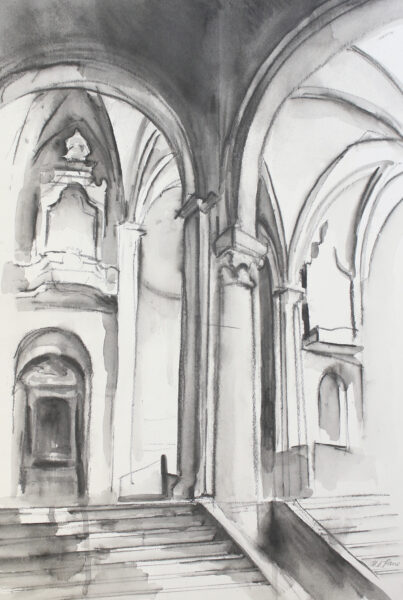
Todi Duomo Side Aisle, Water Soluble Graphite on Watercolor Paper, 14″ x 20″ ©Michelle Arnold Paine 2024
The Romanesque style (approximately 1000-1150 AD) was the precursor to the Gothic style (approximately late 1100s-late 1400s). The most famous Gothic chuof the famous French cathedrals of Notre Dame, Chartres, Reims, Rouen. These churches were famous for the way in which they achieved both light AND height. The stone structures reached towards God in previously unimagined heights. Their stained glass windows, representing the New Jerusalem with its jeweled color in the stained glass windows, simultaneously allowed the light of Christ into the interior.
The Romanesque is heavier, darker. The masons of the Romanesque building boom began to use the rounded Roman arch as a starting point for developing more complex systems of stone vaulting. This use of the Roman arch allowed for greater height and spatial complexity which would then lay the groundwork for the evolution of the Gothic. And it was all done without steel, or steam or diesel powered construction equipment!
Drawing the Romanesque
Drawing the Romanesque churches gives me the time to allow the subtleties of the complex spaces sink in. There is a strong monastic influence on Romanesque art. Cistercian monastery architecture played a prominent role, where the emphasis is on a sense of proportion, a feeling of sparse simplicity which is nevertheless engaging and inviting. I find the interior spaces fascinating because of the overlapping sculptural volumes. As a result, many of my paintings of church architecture are focused on churches in the Romanesque style. This visual play entices me towards the push-pull of using color to carve up a 2D canvas into an illusion of depth.
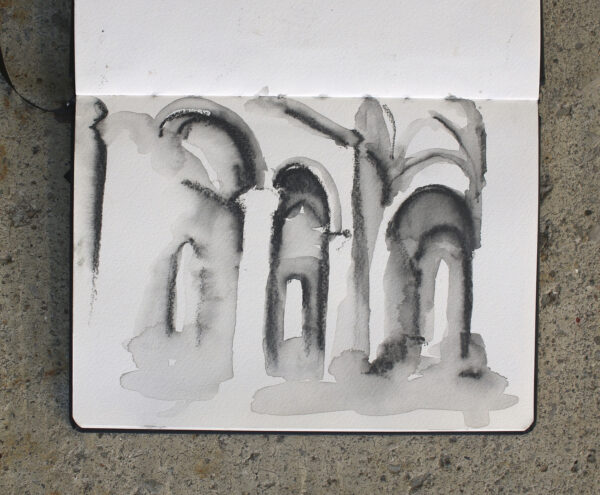
Travel Sketchbook, Water Soluble Graphite on Watercolor Paper ©Michelle Arnold Paine 2024
Pilgrimage Churches
The sculptural complexity of the Romanesque churches evolved partly as a practical solution to the medieval practice of pilgrimage. Architects sought to manage traffic flow of those wishing to visit while still accomplishing the liturgical purposes? The side aisles, ambulatories and easily accessible split level crypts are an invitation to explore, to wander and to worship. These structures were built to welcome pilgrims, to shelter large numbers of people in their search for God. One can sense the invitation to encounter relics and saints, sacraments and signs of God’s work on earth. Now these churches welcome different sorts of pilgrims: modern tourists on the trail of their favorite artists; a secular bucket list of adventures.
The complete series of these graphite drawings was on display at my exhibit “Sanctuary” in Grand Rapids, MI until February 20, 2024 and is at Hudson Gallery, Sylvania OH from December 5, 2024 until January 4, 2025.

